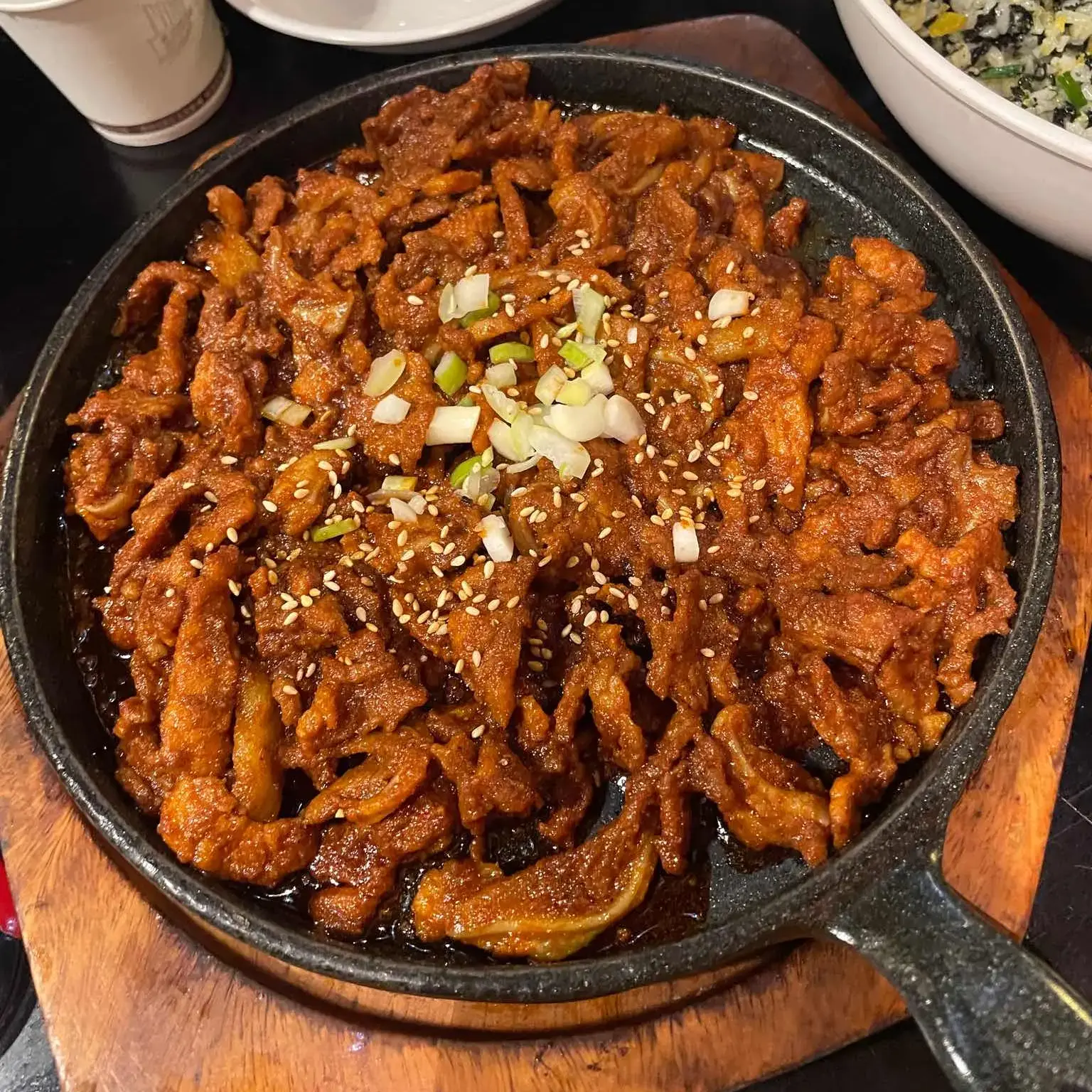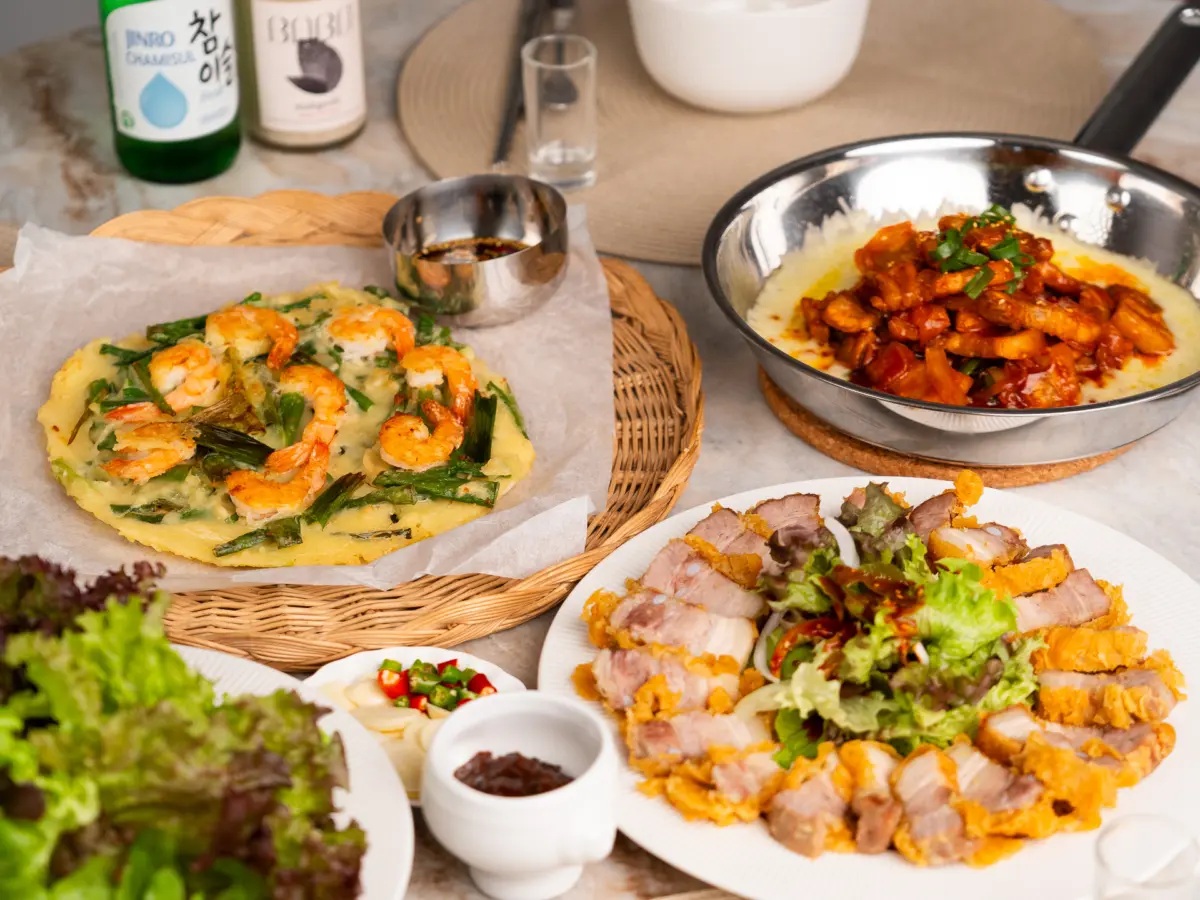Koreans always enjoy soju with anju (paring foods). This is the Top 10 soju anju you must try, along with delicious and easy recipes.
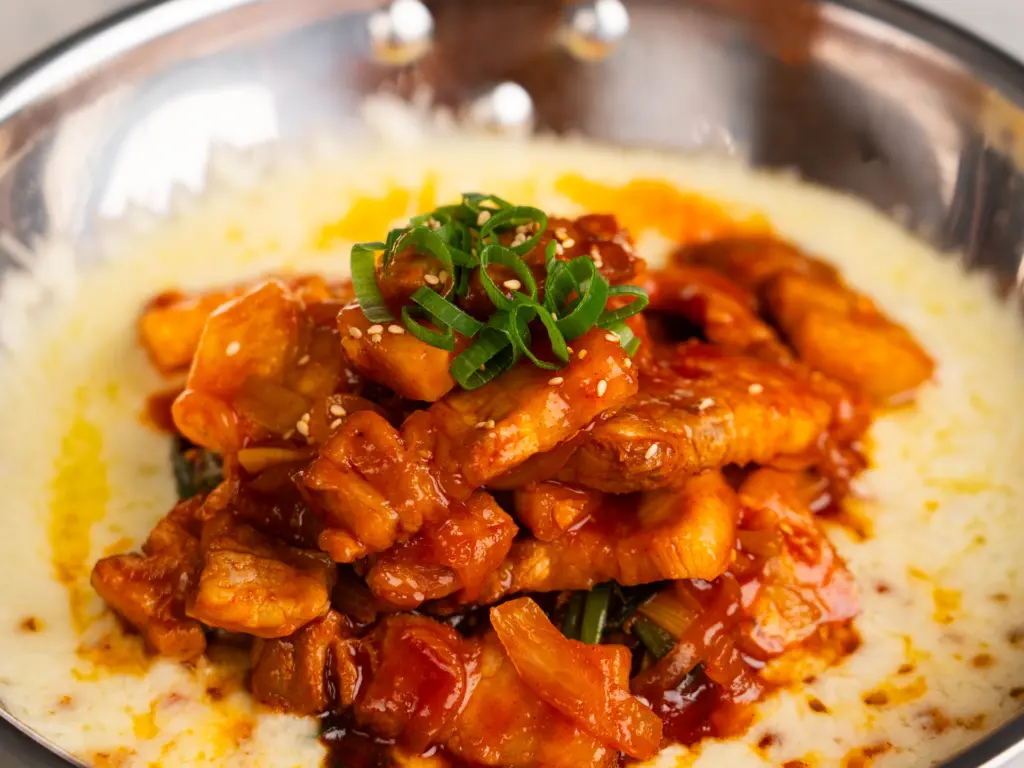
Table of Contents
What is Anju?
In Korea, people rarely drink alcohol without food. Anju (안주) refers to the dishes that are specifically enjoyed alongside drinks. This culture of pairing food with alcohol is especially widespread in East Asia, and Korea in particular.
Drinking without foods can put more strain on the liver, but more importantly, bar food balances the effects of alcohol and makes the drinking experience more enjoyable. Sharing food together also creates a warmer, more social atmosphere at the table.
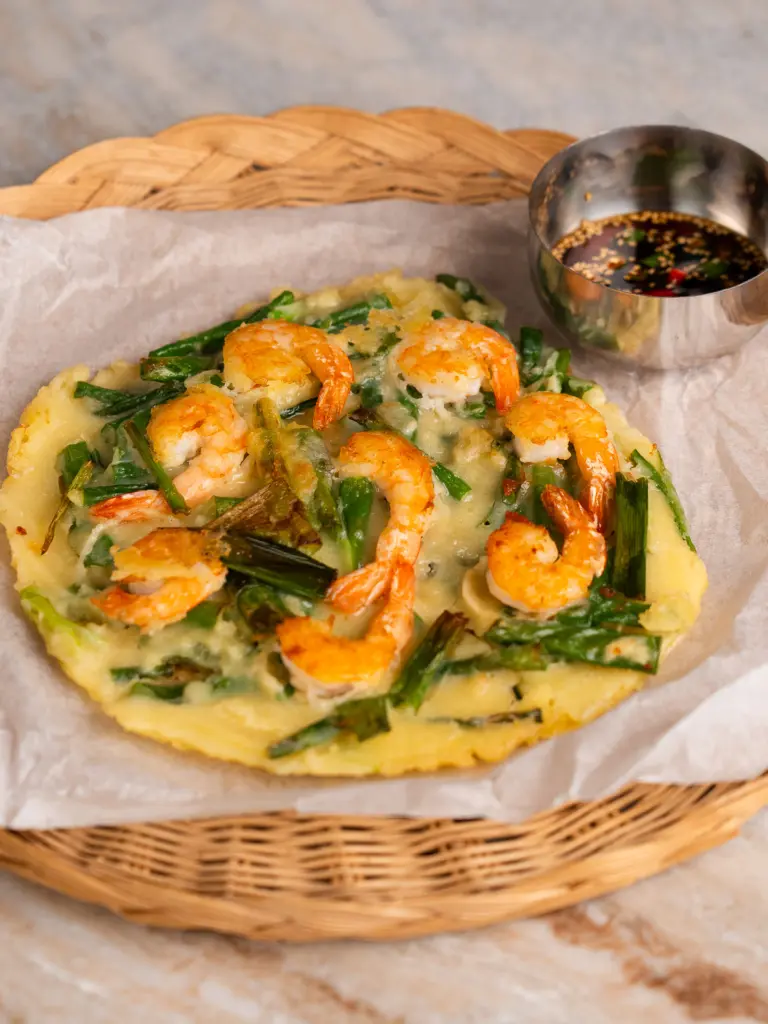
A Variety of Korean Bar Food
In Korea, bar food comes in many forms. The choice often depends on the weather, mood, or type of alcohol being served. For instance, when drinking soju, people typically enjoy hearty dishes such as stews, hot soups, and spicy foods. Makgeolli is often paired with savory pancakes, such as pajeon, on a rainy day, and sometimes with dishes like bossam (boiled pork wraps). On game nights, the classic combination of Korean fried chicken and beer is unbeatable.
What is Soju?
It is Korea’s most popular and iconic alcoholic beverage. There are two main types: distilled one and diluted one. Distilled one is made by fermenting grains and then distilling them, following the traditional method. Diluted one, which is what you’ll find in most stores, is produced by diluting high-proof ethanol with water and adding sweeteners, making it affordable and easy to mass-produce.
- Taste: It is characterized by a slightly bitter taste and a strong alcohol aroma, with a hint of sweetness. It is similar to vodka, but smoother on the throat and lower in alcohol content.
- Always with Food: Koreans rarely drink it alone—they always pair it with food. Even light snacks are common, as enjoying foods with alcohol is an essential part of Korean drinking culture.
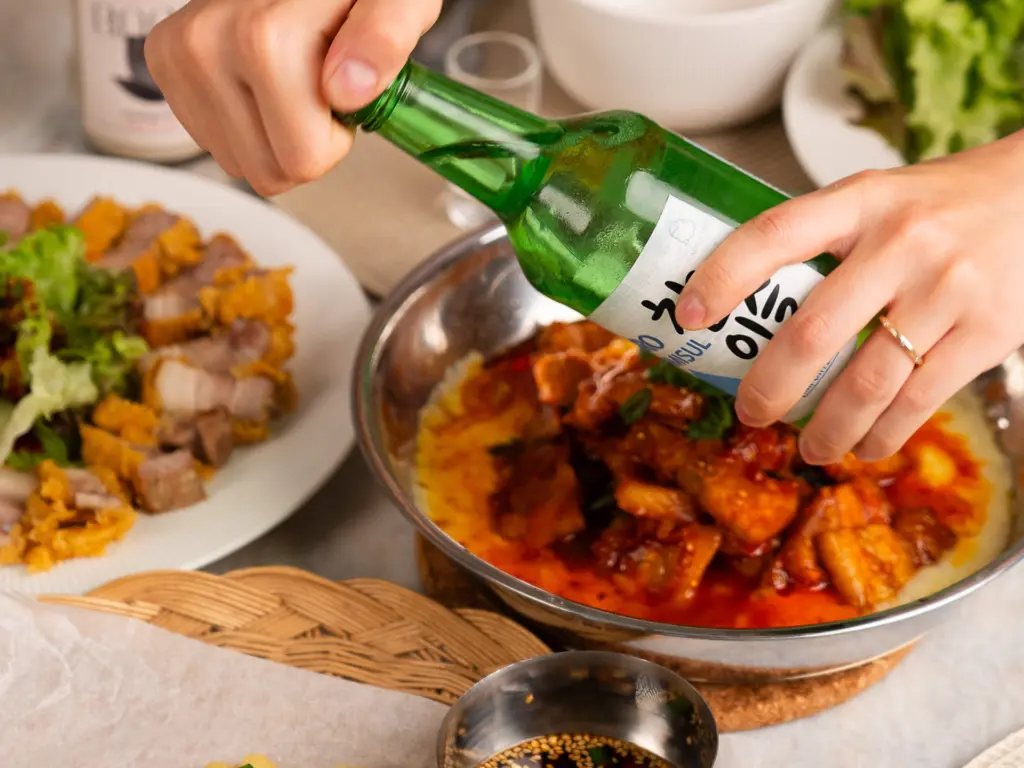
When to Drink?
It is a very popular and casual drink, so it’s generally not served at fancy or formal occasions. It’s mostly enjoyed in relaxed settings—for example, a casual get-together with friends, a company dinner after work (hoesik), or even during emotional moments like a breakup or a tough day.
Korean Pocha
Pocha is short for pojangmacha, which refers to small, tented street bars in Korea. These casual spots serve Korean alcohol along with affordable drinking foods. In the past, they mainly sold dishes like janchi guksu (banquet noodles), udon, or tteokbokki, but nowadays the food options are much more diverse.
Young people often visit there to enjoy a retro vibe, and some indoor bars are also styled like pochas, which Koreans still call that way. A famous example is Hanshin Pocha.

Fun Korean Pocha Night at Home
Experience the lively atmosphere of a Korean pocha (bar) right at home. Along with trendy and delicious anju recipes you can enjoy with friends, you’ll also find drinking games to keep the night fun, plus a curated K-pop playlist to capture the authentic pocha vibe. The playlist is personally selected and will be regularly updated with new tracks to keep things fresh and trendy for your pocha mood every time.
You’ll also get a full set of Korean phrases commonly used at Korean bars and essential Korean drinking etiquette. Host your own Korean bar at home—because no matter where you are, you deserve to enjoy this fun piece of Korean culture!
Korean Drinking Culture
- Time for Conversation: In Korea, drinking isn’t just about alcohol. It’s a time to gather with people, share delicious food, and slowly enjoy drinks while having meaningful conversations. During these moments, honest talks are exchanged, joys are multiplied, and sorrows are shared and halved.
- Delicious Food: Koreans pay close attention to pairing the right foods with each type of alcohol, valuing the harmonious flavors that enhance the drinking experience.
- Drinking Etiquette: In Korea, drinking etiquette is taken very seriously. It’s common for people to judge your character based on how you behave while drinking. That’s why when enjoying Korean alcohol, it’s important to learn the proper etiquette and experience it the right way. To make sure you don’t make any mistakes when drinking with Koreans, this Korean Bar Night Set also guides you through essential Korean drinking etiquette in detail.
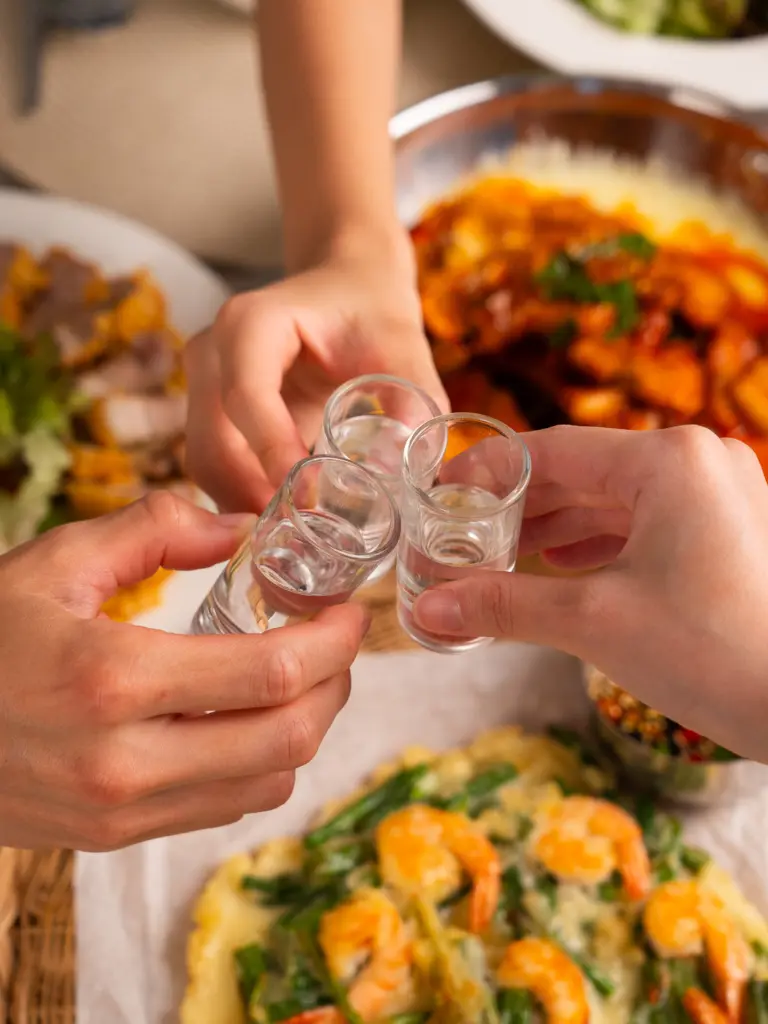
Top 10 Soju Anju
Koreans always enjoy drinks with food—drinking it alone is almost unheard of. Foods that pair well with it include soups, spicy dishes, and meats. Here, I’ll share the Top 10 Korean bar foods that Koreans love to eat with soju, along with simple and delicious recipes you can try at home.
Hoe (Raw Fish, Sashimi)
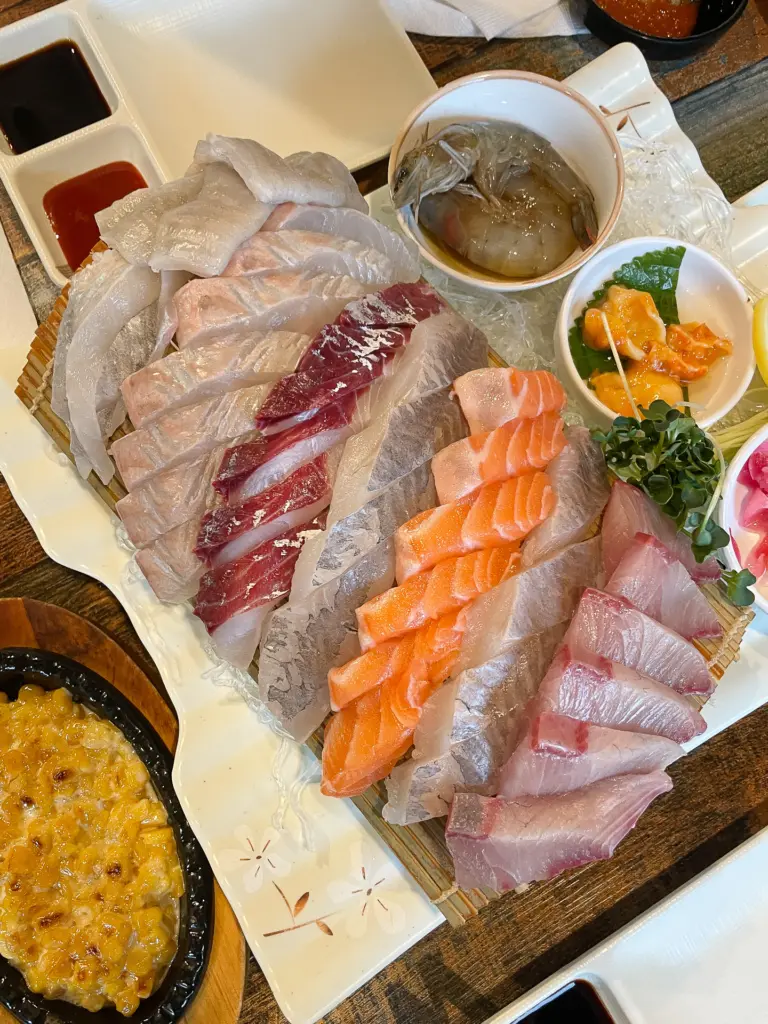
Just as Japanese people enjoy sake with sashimi, Koreans often pair sojoo with raw fish, or hoe. The clean and crisp taste of alcohol helps neutralize the fishy flavors, and when paired with oily fish like salmon or yellowtail, it cuts through the richness, making each bite refreshing.
Samgyeopsal (Korean BBQ)
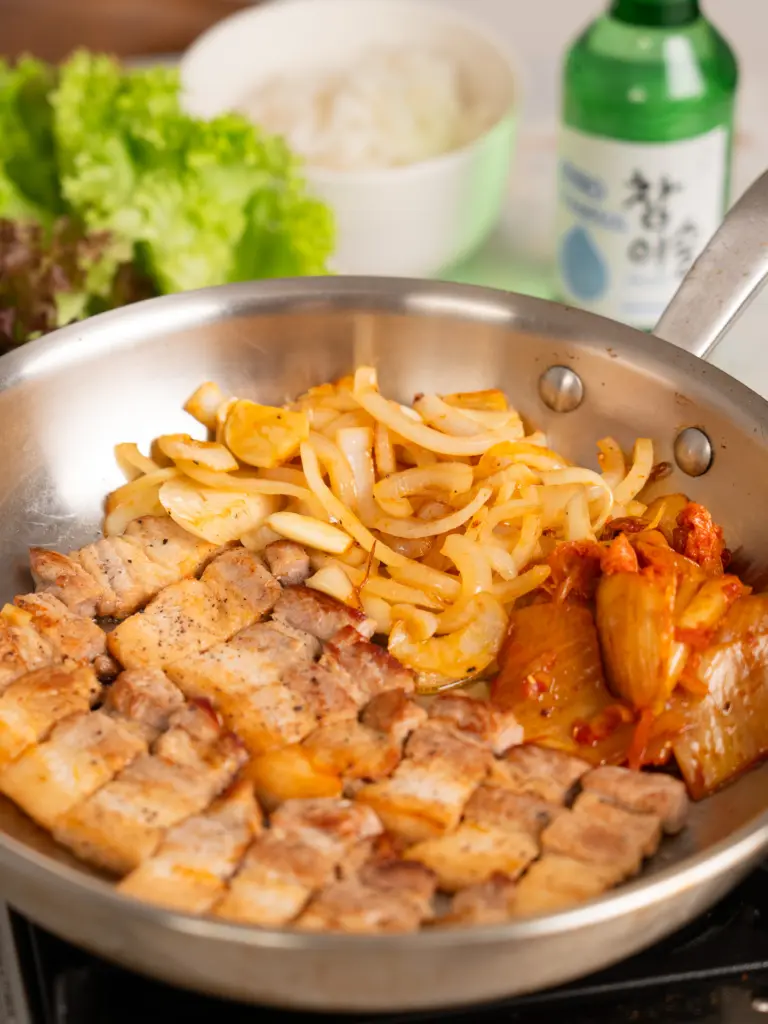
Korean BBQ, especially Samgyeopsal and soju is one of the most beloved food pairings in Korea. Pork belly is a fatty cut that can feel heavy, but the alcohol and dry taste cleanse the palate, refresh the mouth, and perfectly balance the richness of the meat.
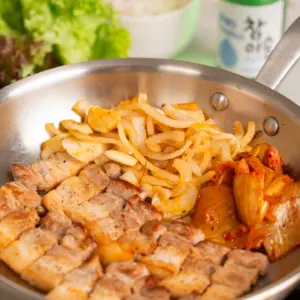
Budae Jjigae (Army Stew)
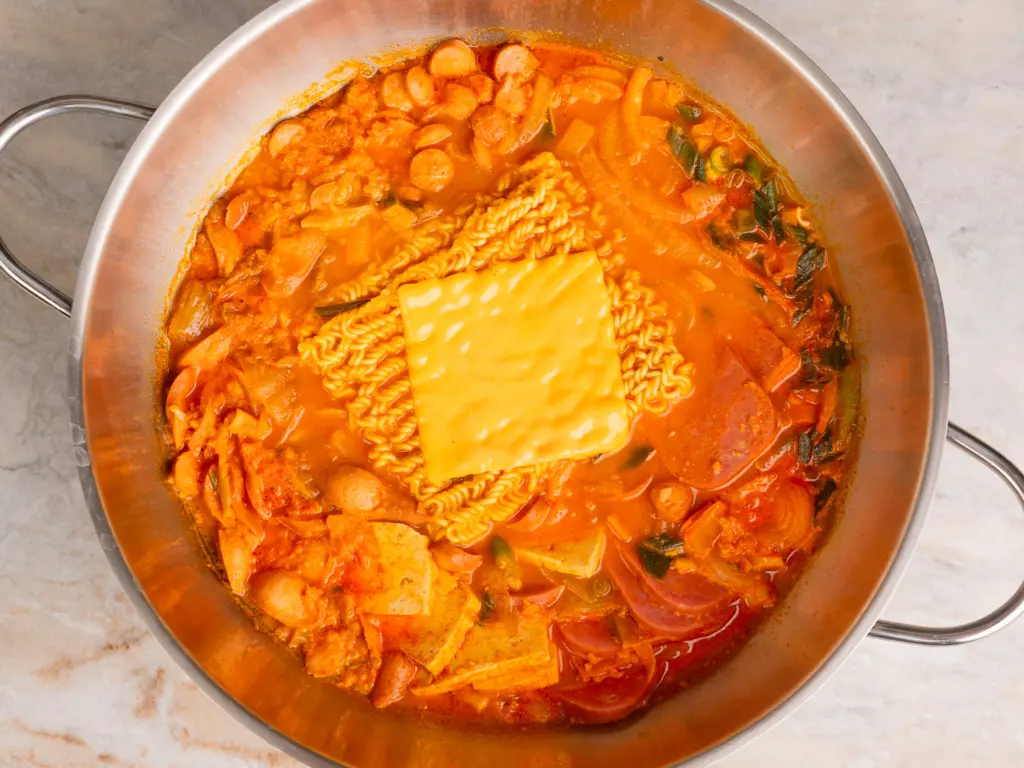
Koreans love to enjoy spicy and savory soups with soju, and budae jjigae is a perfect example. The ham and sausages provide a strong salty and umami flavor, while the spicy broth made with gochujang and kimchi pairs wonderfully with sojoo, enhancing the drinking experience.
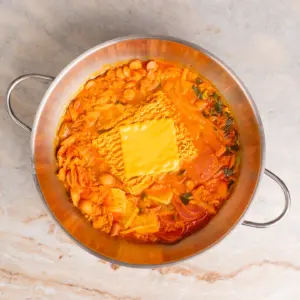
Gopchang (Grilled Intestines)
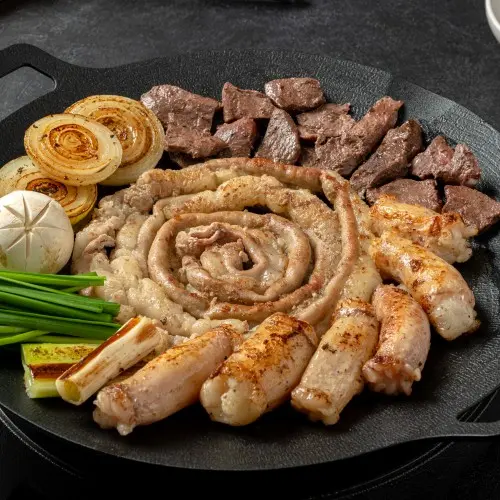
Gopchang can be made from beef small intestines or pork large intestines. Its chewy texture is a standout feature. Beef gopchang releases flavorful fat as it cooks, giving a rich, nutty taste, while pork gopchang is often stuffed with noodles or stir-fried with vegetables. Since intestines can have a slight gamey smell and are fatty, alcohol helps neutralize odors and cuts through the richness, making each bite more enjoyable.
Stir-Fried Sausages with Vegetables
This is a popular side dish at Korean bars, but it’s also an easy and quick bar food to make at home using just ketchup and a few simple ingredients.
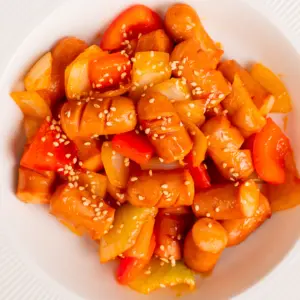
Eomuk Tang (Fish Cake Soup)
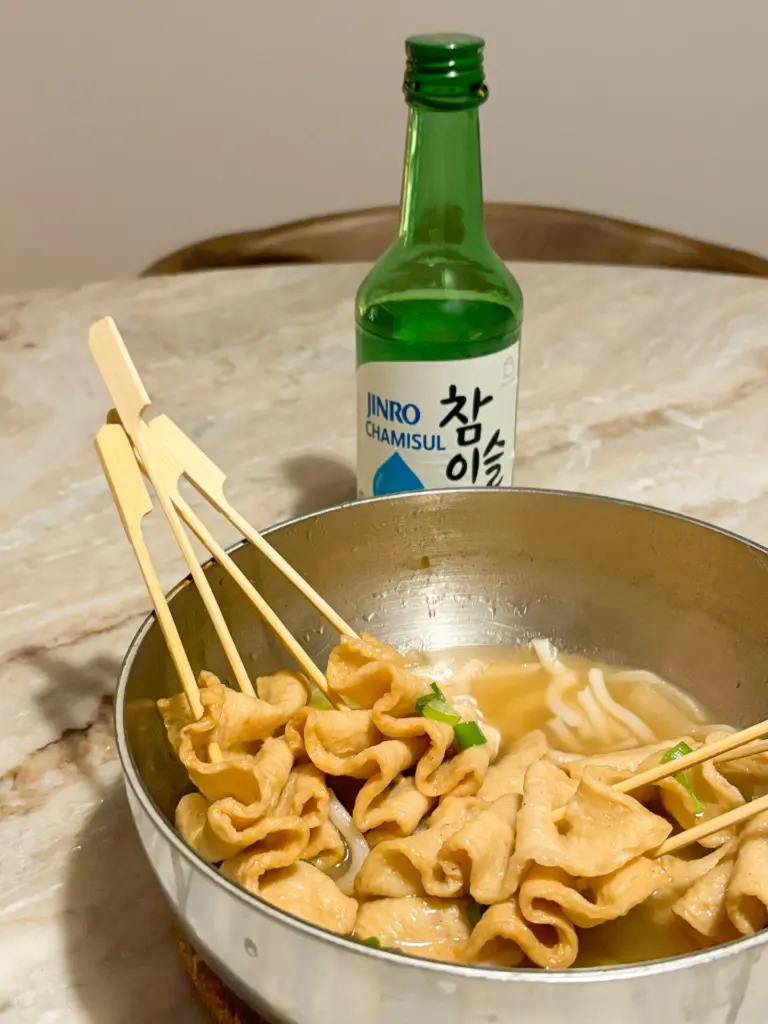
The warm, savory broth with fish cakes gently balances the strong alcohol flavor of sojoo, making it a perfect pairing. This is also a common bar food in Korea, and some people like to add udon noodles for an extra hearty touch.
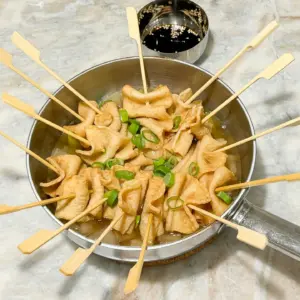
Dak Bal (Spicy Chicken Feet)
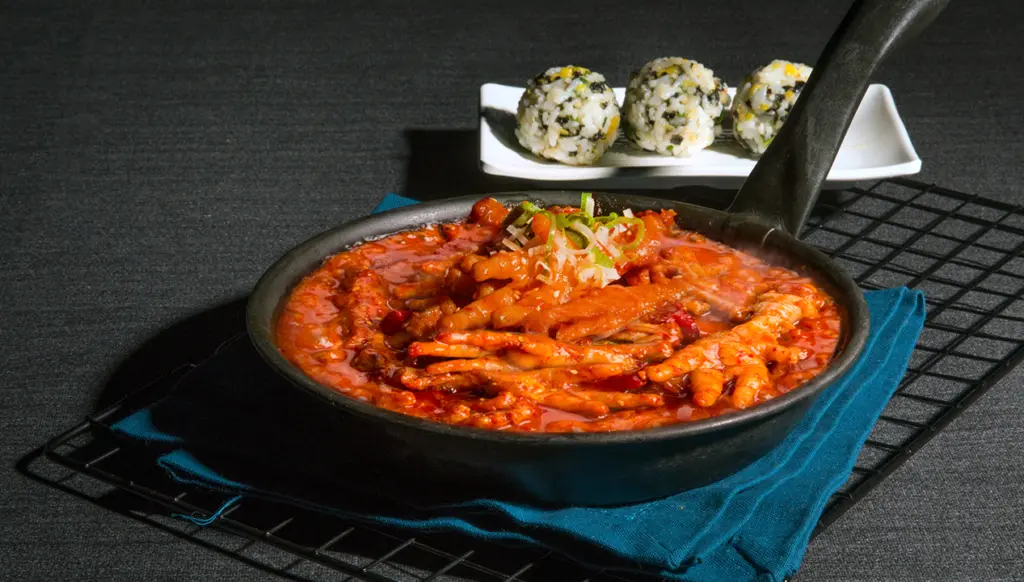
Chicken feet are one of Korea’s iconic bar food dishes. They are stir-fried in a spicy and sweet sauce, creating a bold flavor. The reason they pair so well with sojoo is that the spiciness perfectly complements the alcohol—a combination beloved by many Koreans. While this dish might be considered unusual in other countries, it’s a favorite sojoo pairing, especially among Korean women.
Kimchi Jjigae
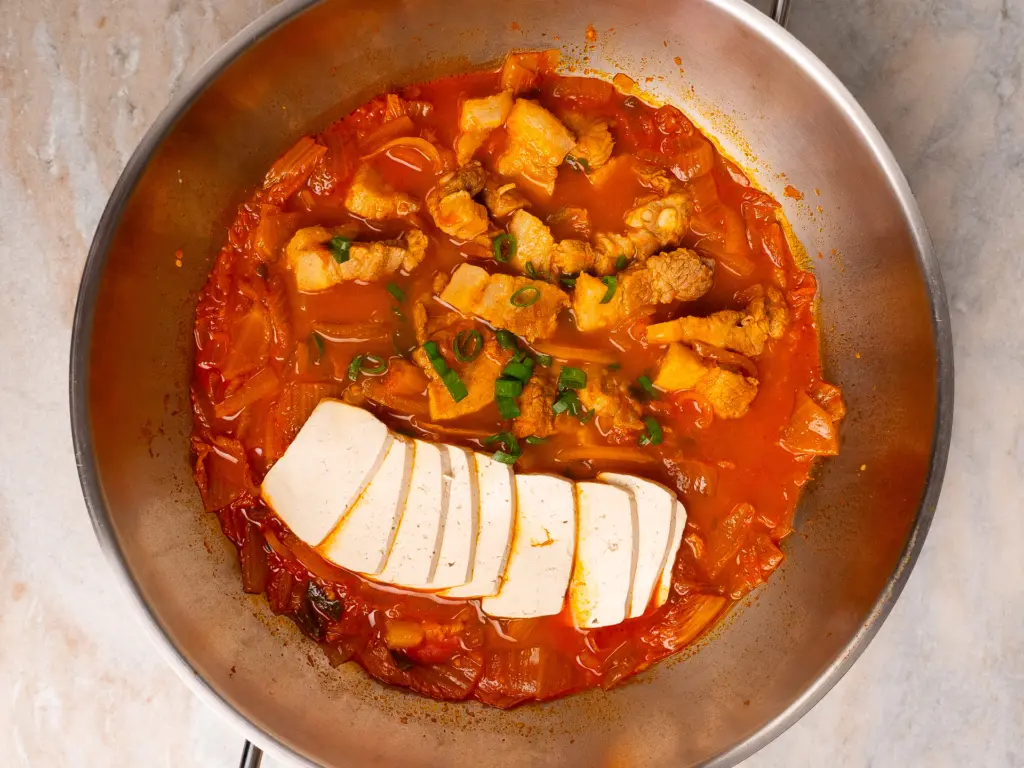
Koreans enjoy spicy and salty soups when drinking sojoo, and kimchi stew is the perfect example. Its bold, tangy broth pairs harmoniously with alcohol. Pork kimchi stew, in particular, contains fat that helps balance and mellow the alcohol.
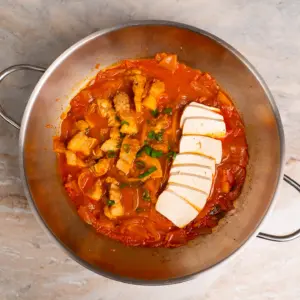
Dakgalbi (Spicy Stir-Fried Chicken)
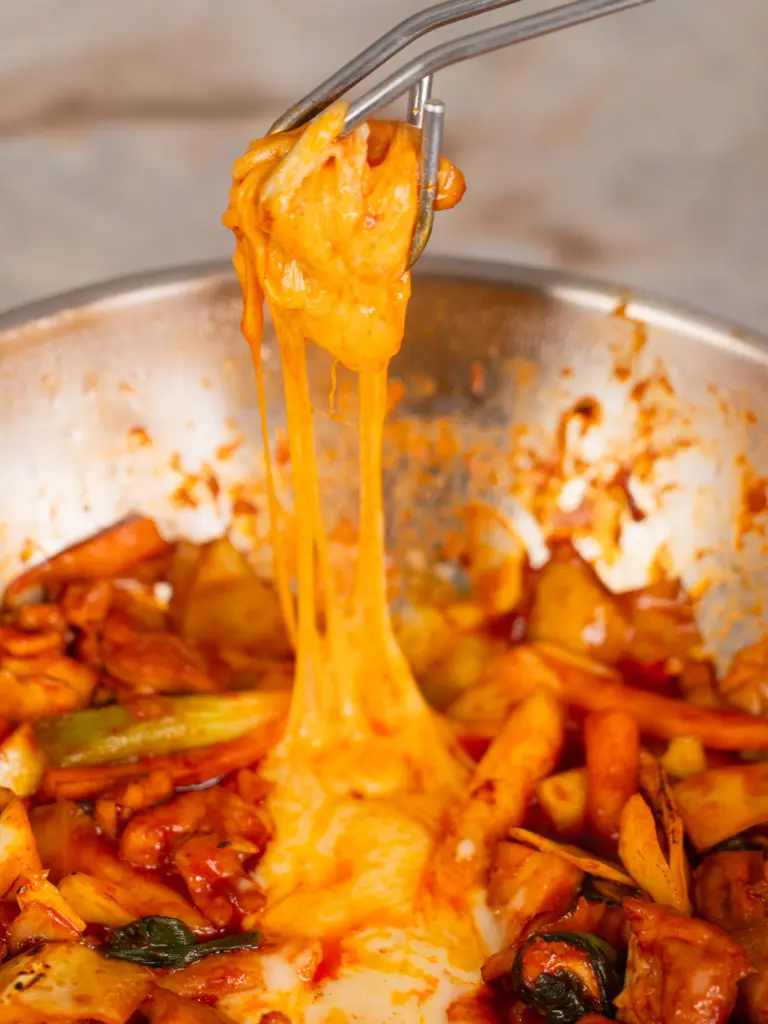
Dakgalbi is chicken stir-fried with gochujang (Korean chili paste) and vegetables in a spicy-sweet sauce. The combination of the spicy-sweet flavor and the richness of the dish makes it an excellent pairing with sojoo.
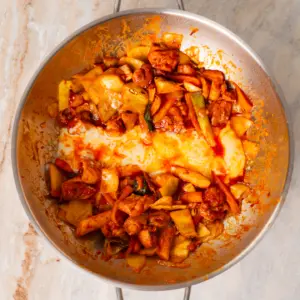
Odolbbyeo (Spicy Stir-Fried Pork Cartilage)
Odolbbyeo refers to the rib cartilage found in pork belly. Its unique texture comes from the soft cartilage that crunches slightly when chewed along with the meat. Typically stir-fried in a spicy-sweet sauce, it’s less of a meal and more of a classic Korean anju, perfect for enjoying with soju.
